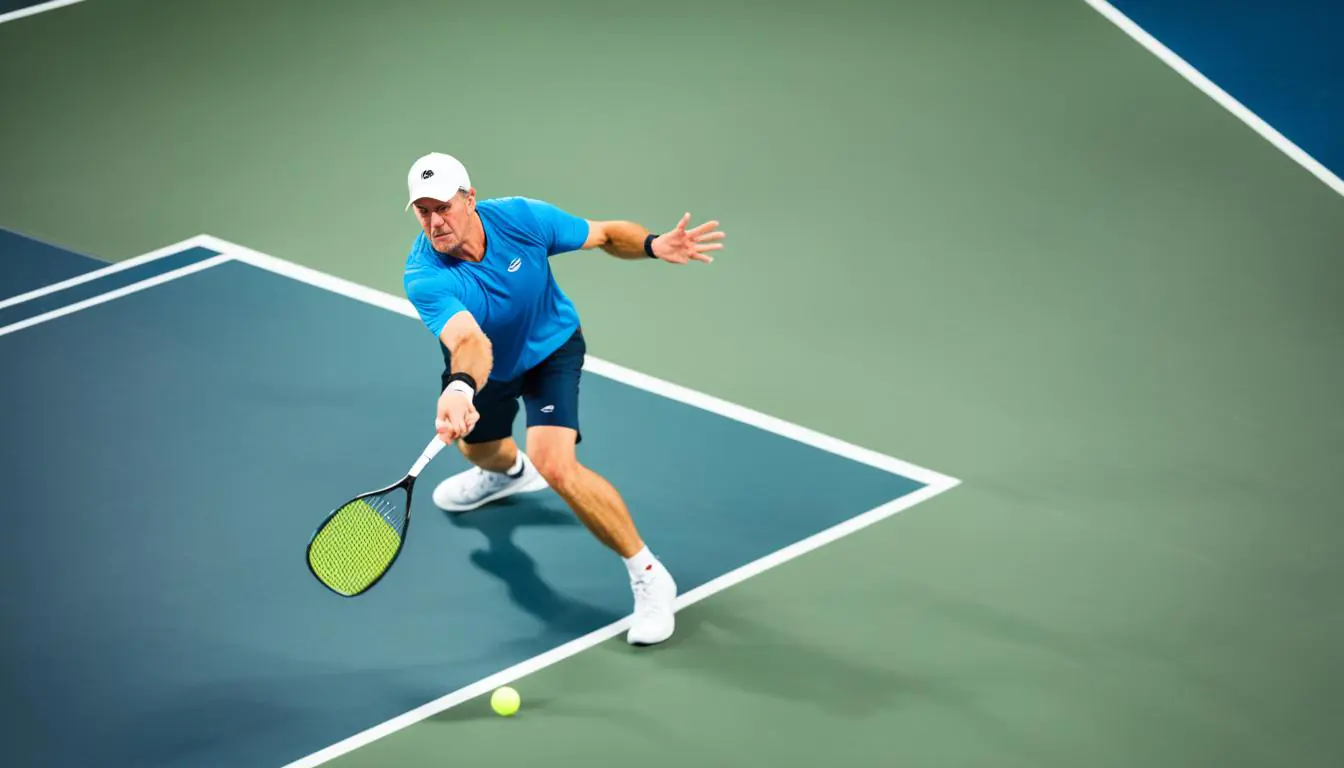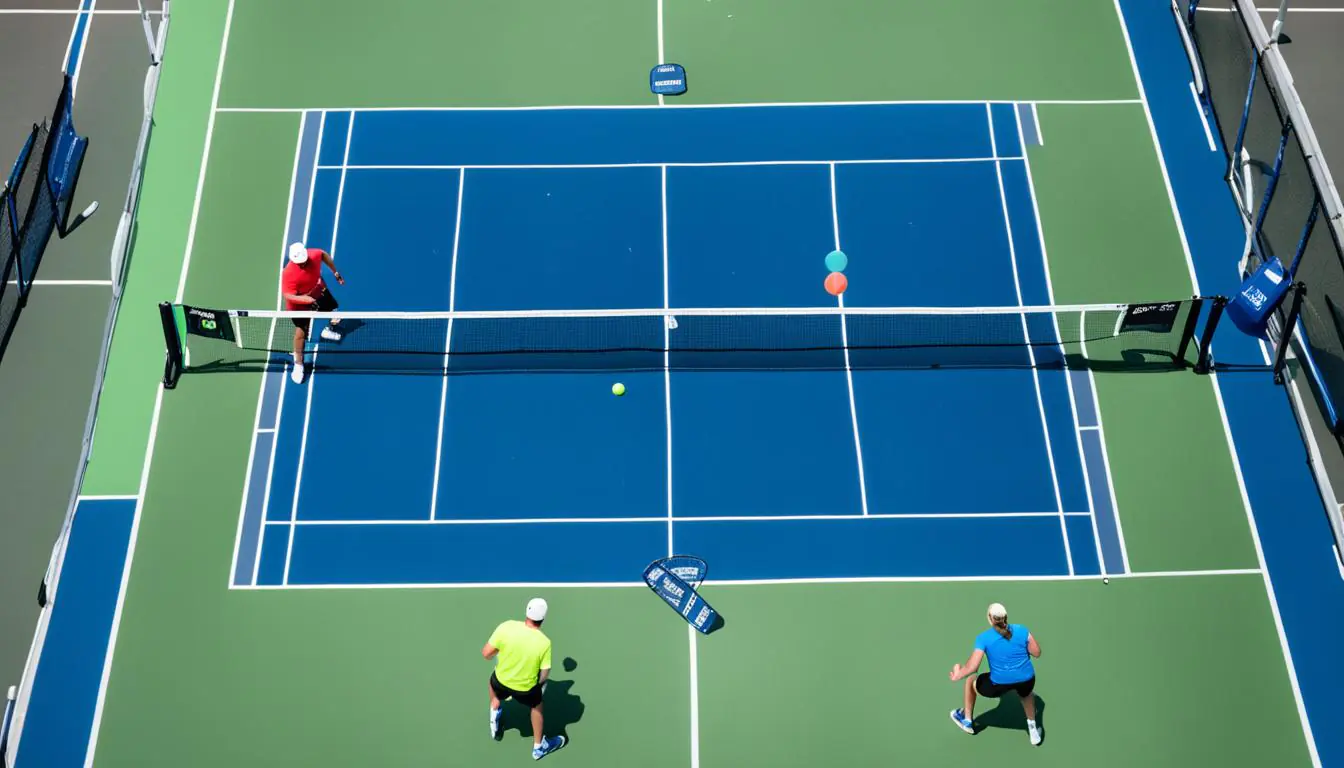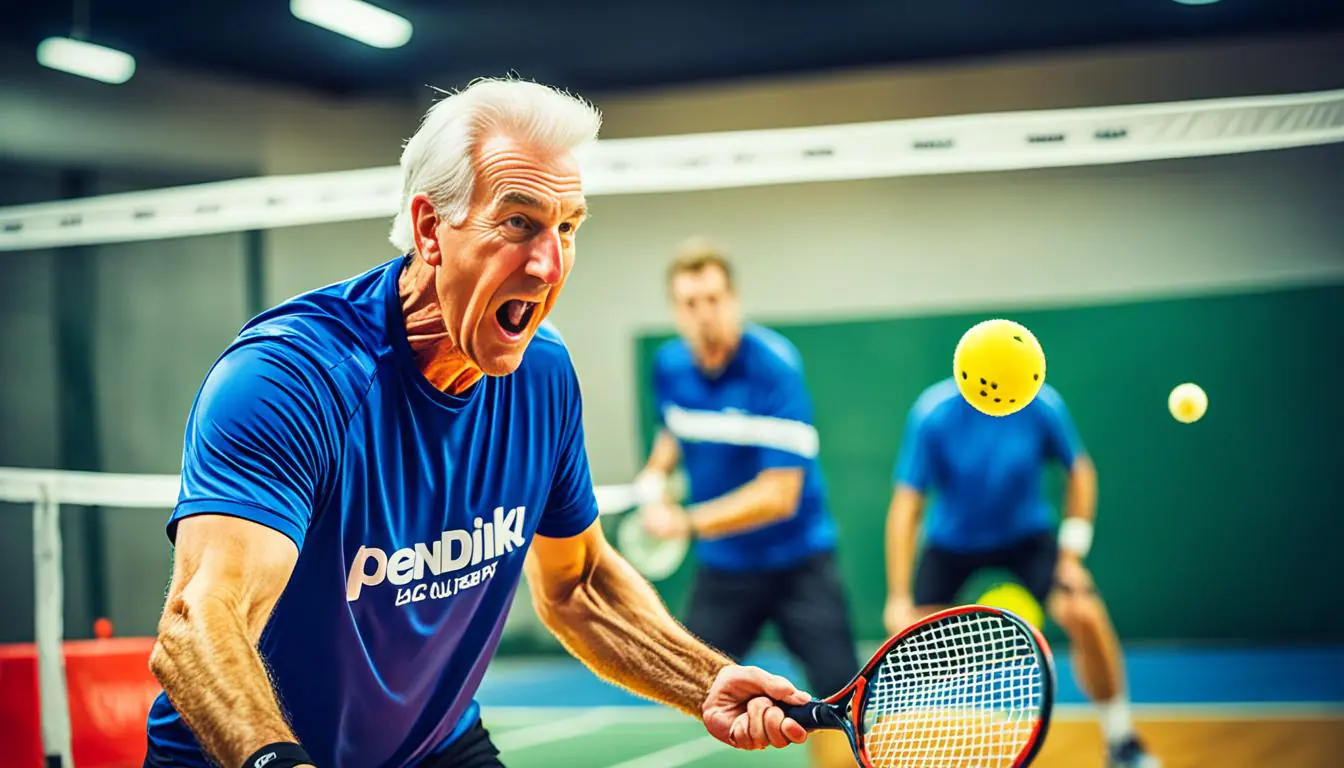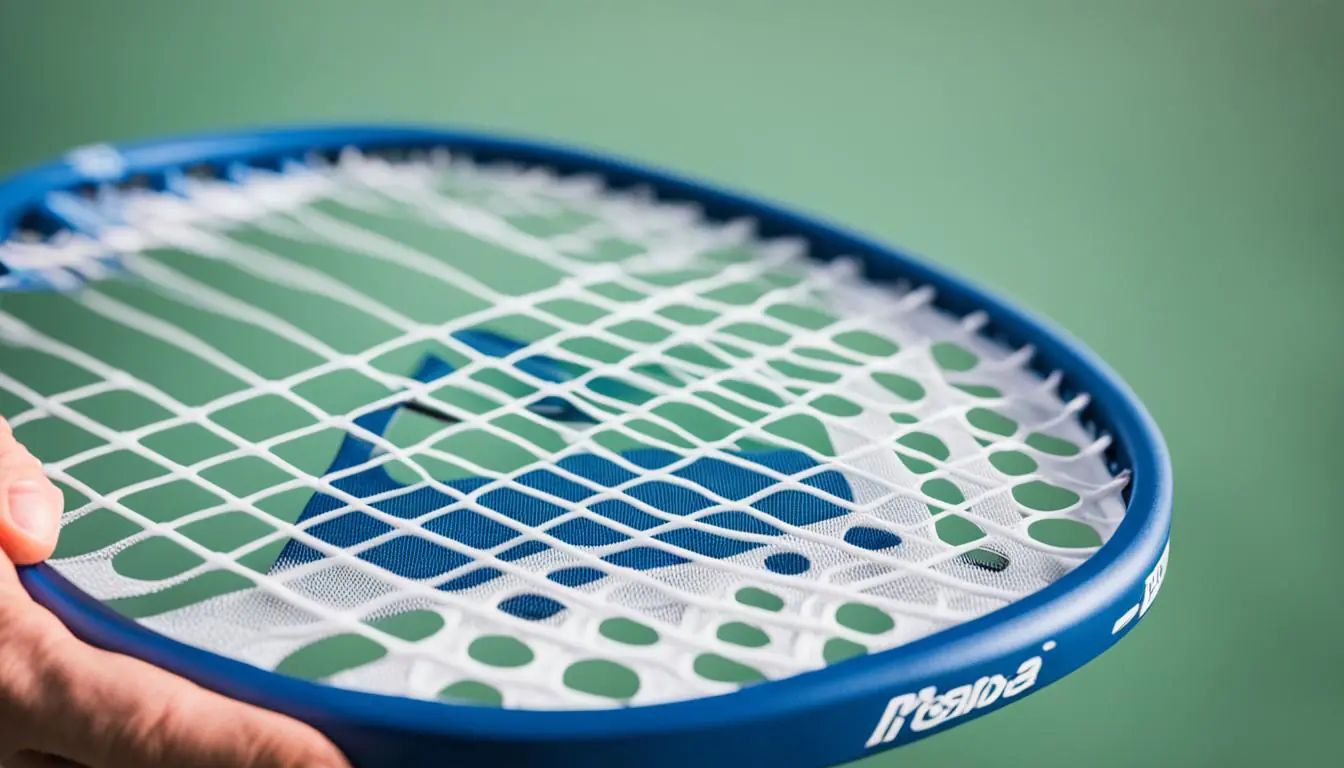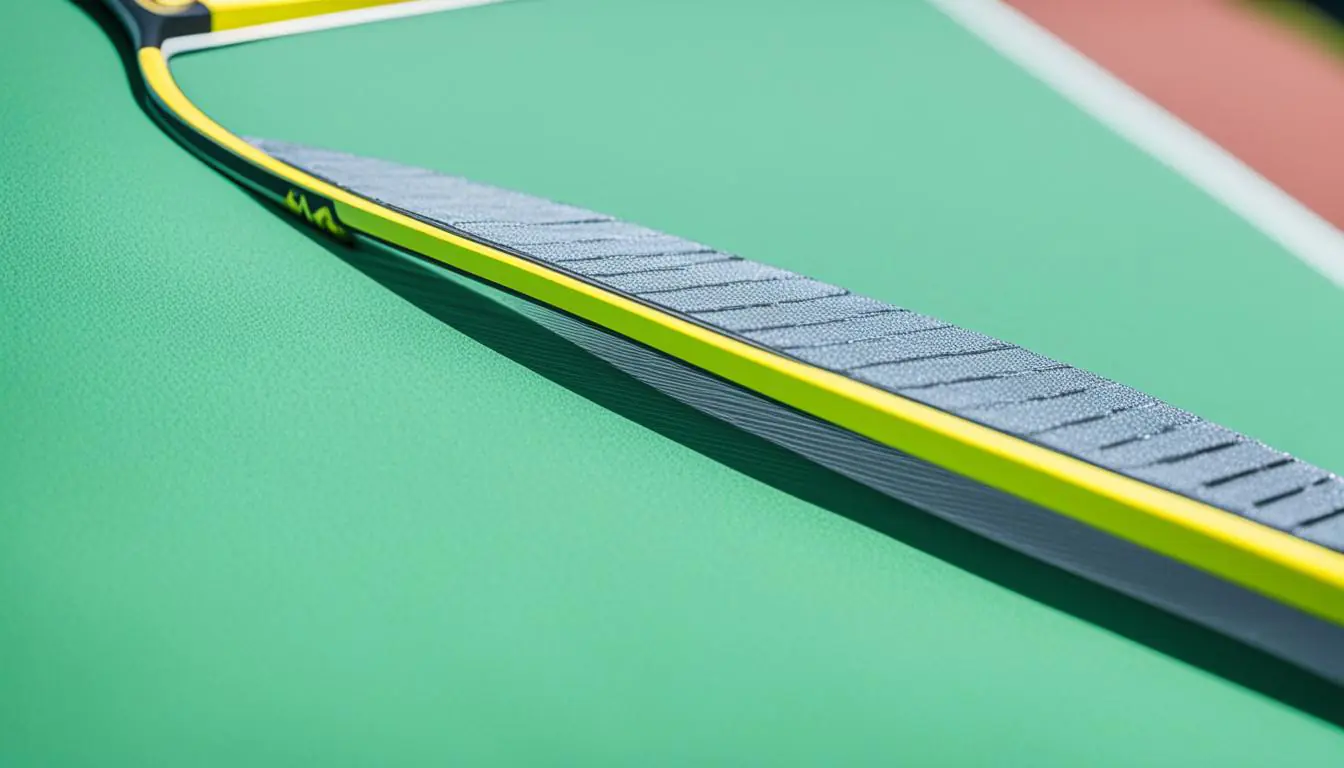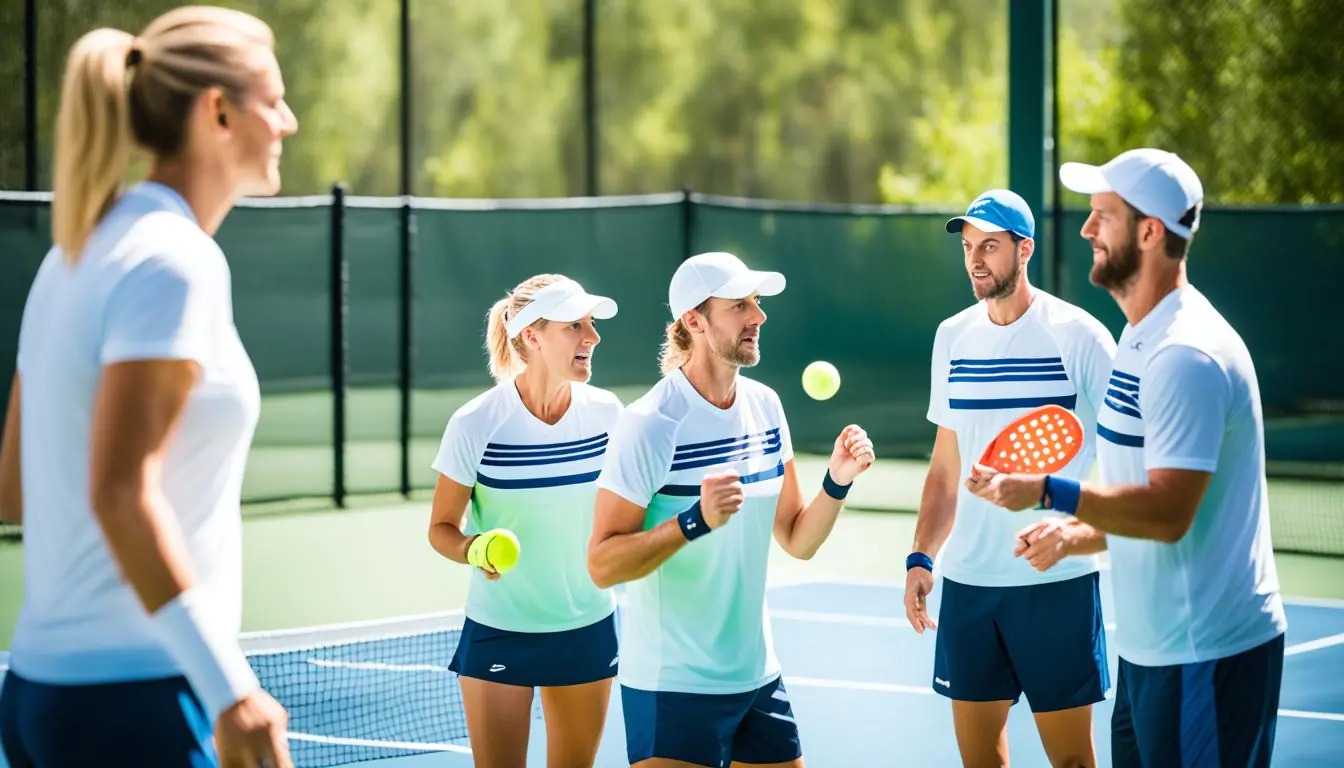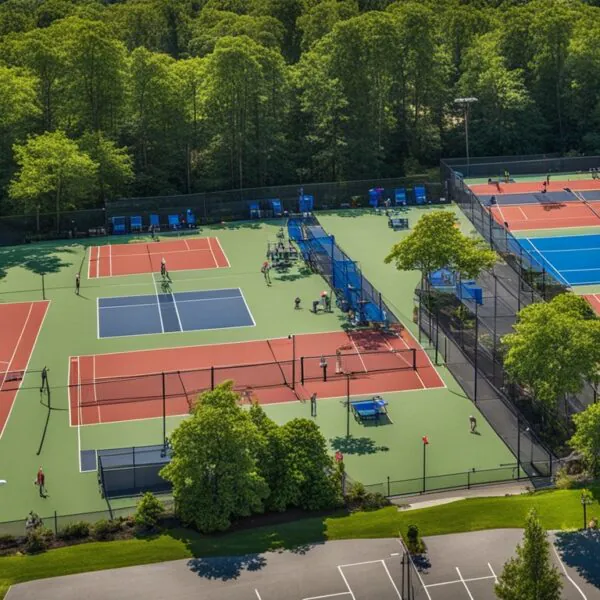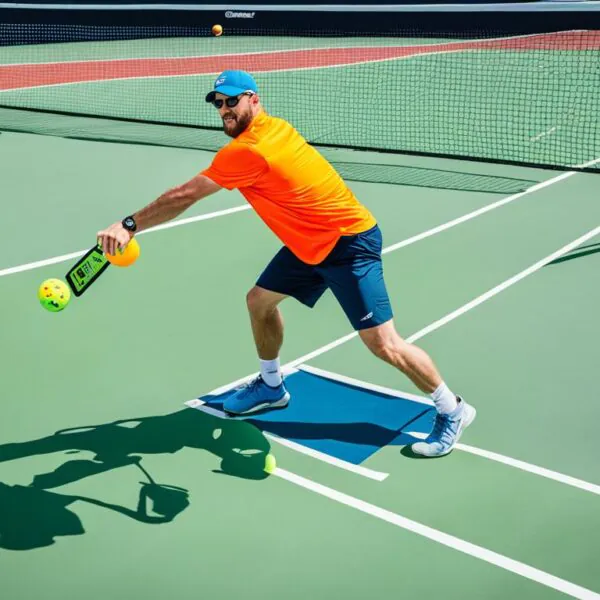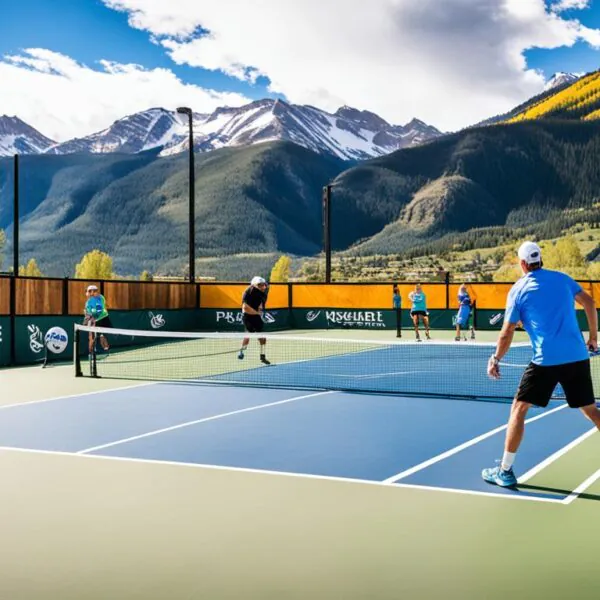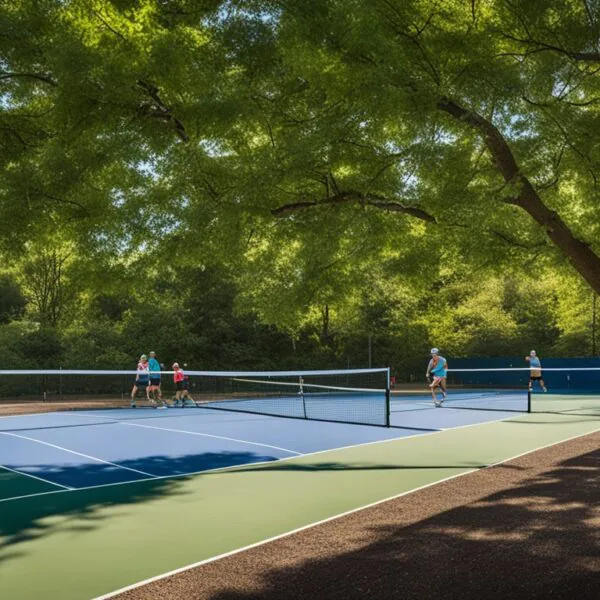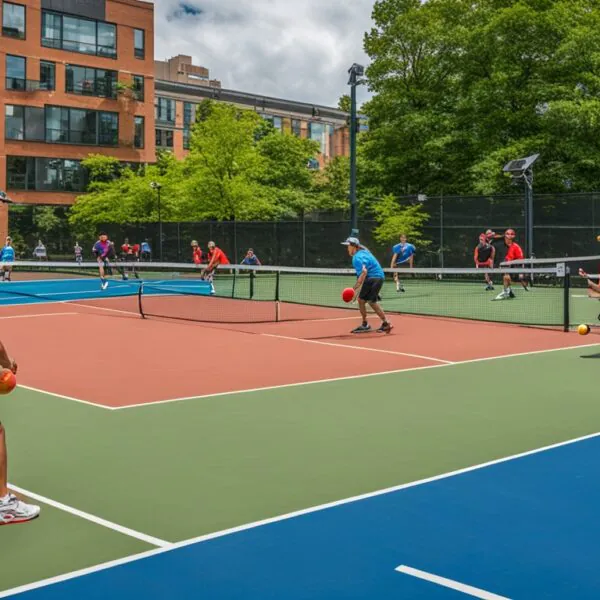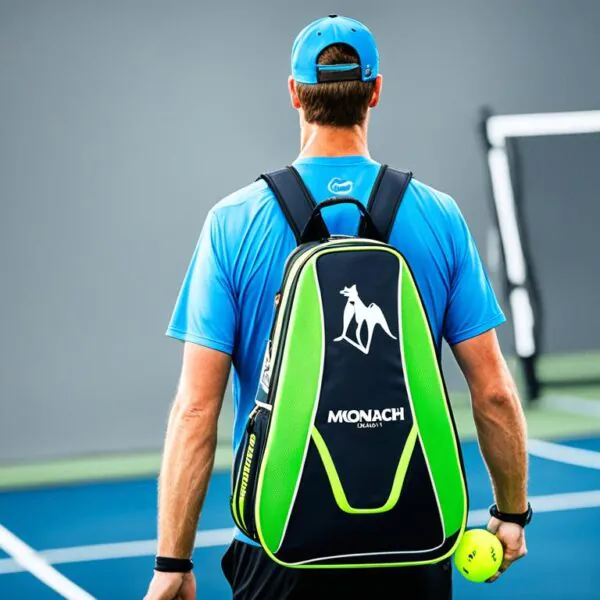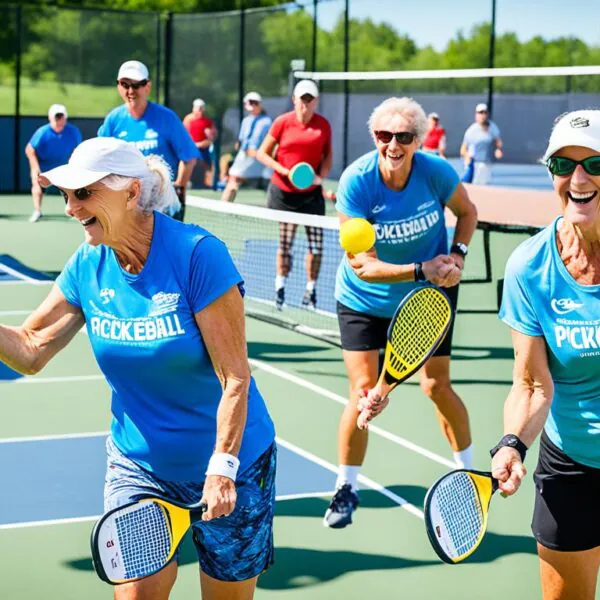Did you know skinny singles pickleball courts are only 20 feet wide? This is much narrower than the traditional 44 feet. This makes the game more challenging and requires better shot precision and strategy.
Players of all skill levels can enjoy skinny singles. It’s a fun way to improve your skills in a fast-paced game. I’ll share tips on skinny singles pickleball strategy to help you play better.
By the end of this article, you’ll know how to improve your game. You’ll get pickleball tips that will make you a better player.
Key Takeaways
- Skinny singles requires heightened precision due to a narrower court.
- The basic gameplay rules include serving from odd and even sides based on score.
- Advanced techniques like overhead lobs can create significant offensive opportunities.
- Understanding scoring scenarios enhances strategic thinking during matches.
- Players can refine their doubles skills within the singles format.
- USAPA’s influence on skinny singles rules shapes gameplay dynamics.
- The game’s accessibility encourages participation among players of all ages.
Understanding Skinny Singles in Pickleball
Learning about skinny singles pickleball is key for players wanting to get better. It’s played on a smaller court, making players change their game plan. We’ll look at the main ideas, size, and how it’s different from regular singles pickleball.
Core Principles and Court Dimensions
The game is played on a 10-foot wide court, but it’s still 40 feet long. This smaller size means players must aim better and move smartly. They aim to control the middle of the court. Winning points comes from smart shots and taking risks.
Differences from Traditional Singles Pickleball
In skinny singles, players can’t use the whole court. The serving player scores points in a rally. The scoring system is unique, so players must pay attention to where they stand based on the score.
Even scores mean playing from the right side, odd scores from the left. Players only serve once, so mastering the Non-Volley Zone Line is key.

More people are playing skinny singles, making the game exciting. It tests both physical and mental skills, as players adapt to a half-court game. The mix of competition and strategic play makes skinny singles interesting.
Explore more about skinny singlesand improve your skills in pickleball
Skinny Singles Pickleball Strategy: Rules and Scoring
Learning the rules and scoring in skinny singles pickleball is key for any serious player. This version keeps the main rules of traditional singles but adds special changes. Knowing these rules will help me play better and win more games.
Basic Gameplay Rules
Skinny singles has many of the same rules as regular singles pickleball, but the narrower court changes things. Here are some important rules to remember:
- The court is 20 ft x 44 ft big, but mini courts are 44 ft long and 10 ft wide.
- Players switch sides when the score is even or odd.
- You can’t volley in the kitchen, which is 7 ft from the net and 15 ft from the baseline.
- Players can use around-the-post (ATP) shots for strategy.
Scoring System Overview
The scoring in skinny singles is similar to regular singles. Here’s how it works:
| Feature | Skinny Singles | Traditional Singles |
|---|---|---|
| Winning Points | First to 11 with a 2-point lead | First to 11 with a 2-point lead |
| Serving | Two players alternate serves | |
| Scoring Turns | Player serves until a fault | Either player can score |
Knowing the rules and scoring can make me a better player. It helps with winning moves and strategies in games.
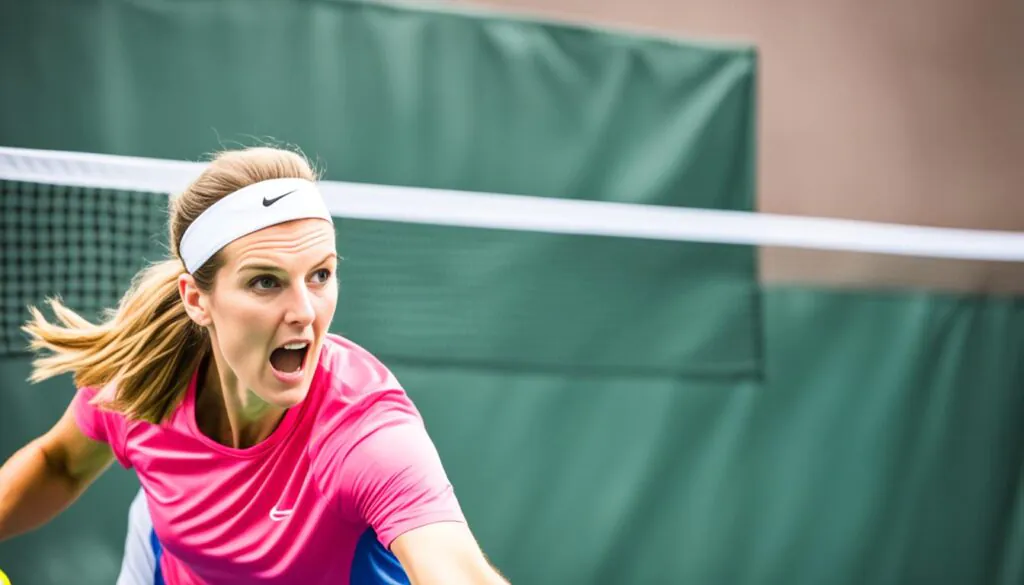
Critical Strategies for Playing Skinny Singles
In skinny singles, having good strategies is key to winning. The game is different because of the smaller court. A strong game plan helps you score more and win matches.
Effective Footwork and Movement
Being quick is very important in skinny singles. You need to move fast side to side to get to shots. Good footwork lets me find openings in my opponent’s defense. This way, I can play better and take charge of the game.
Controlling the Non-Volley Zone
Going to the kitchen line after serves and returns helps a lot. Being in control there lets me hit strong volleys and keep my opponent on the back foot. This is a key part of my game plan, making me play more aggressively and score quickly.
Utilizing Angles and Shot Placement
Where you hit the ball is crucial for scoring. Hitting at sharp angles makes it hard for your opponent to move. Using these strategies helps me control the game and makes mistakes less likely.

| Strategy | Description | Benefits |
|---|---|---|
| Footwork | Quick lateral movements to position for shots | Improved interception and control |
| Non-Volley Zone Control | Advancing to the kitchen line after serves | Enhanced volley strength |
| Shot Placement | Using angles to maneuver opponents | Increased scoring opportunities |
Advanced Pickleball Strategies for Skinny Singles
To get better at skinny singles pickleball, I’ve learned advanced shot techniques. One key move is the lob technique. It can mess up my opponent’s position and open doors for aggressive moves.
I use it smartly, especially against players who can’t hit overhead shots well. This keeps me on the attack, especially when my opponent isn’t ready for the high shot.
Mastering the Lob Technique
Using around-the-post (ATP) shots also helps a lot. This move lets me hit shots that my opponent doesn’t expect. ATP shots can turn a rally around and lead to winning shots.
Adding these strategies with good footwork makes me a better player. It helps me move well on the court.
Implementing Around-the-Post Shots
Being fit is also key in singles pickleball. I train with drills that include lobs and ATP shots. This makes my game better and keeps my opponents guessing.
Using power and precision in my shots helps me win. Learning these complex moves makes me a stronger player.
